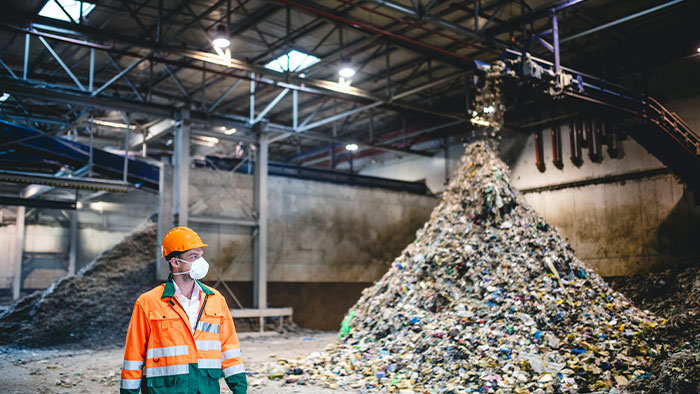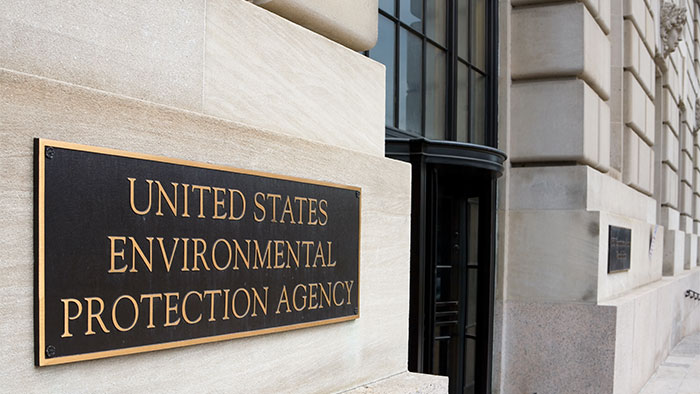Environmental Justice and Retail
- By [ Tiffin Shewmake ]
- 07/07/2021

There are several aspects of Environmental Justice (EJ) that have direct or indirect impacts on retail operations such as warehouses, chemicals of concern in products, and the siting of undesirable facilities such as recycling operations. The Biden Administration’s focus on EJ, combined with increasing expectations around corporate responsibility, social governance, and transparency, means that it is an area of growing prominence for retail that has both potential risks and benefits. This post is intended to raise awareness about EJ issues that are relevant to retail rather than being a comprehensive look at the topic.
From their campaign platform through the first 100 days in office, the Biden Administration has identified EJ as a critical priority, adopting a “whole of government” approach that asks every federal agency to address environmental inequalities and to deliver 40 percent of benefits from relevant federal investments to disadvantaged communities. The U.S. Environmental Protection Agency (EPA) has also made commitments to increase the consideration of EJ in the regulatory process and in enforcement.
EPA defines EJ as “the fair treatment and meaningful involvement of all people regardless of race, color, national origin, or income, with respect to the development, implementation, and enforcement of environmental laws, regulations, and policies.” Since at least the late 1980’s, numerous studies have shown that low-income and minority communities have long suffered a significantly greater burden from exposure to pollution and toxic chemicals. This follows from the often cumulative siting of undesirable facilities with significant environmental footprints (such as major air emission sources, hazardous waste sites, and landfills), as well as infrastructure issues such as lead paint and pipes in aging homes. The related negative impacts can result in disproportionately adverse health outcomes in low-income and minority communities, such as premature death, asthma, lung and heart disease, and other chronic diseases.
EJ Legislation at the Federal and State Level

Currently there is no single comprehensive EJ law at the federal level. However, through a series of executive orders, the Biden Administration is increasing the federal government’s EJ obligations in an unprecedented fashion with accompanying increases in White House oversight. The Biden Administration’s insistence upon using an EJ lens in agency work will drive agencies across the federal government to incorporate EJ into many aspects of their existing regulatory programs. This includes the approval of air and other permits, in determining enforcement priorities, in selecting grant recipients, and in other analyses. For example, EPA is including EJ considerations in the development of risk management actions under the Toxic Substances Control Act (TSCA). The EPA also maintains the EJSCREEN mapping tool to identify overburdened communities, which the White House Council on Environmental Quality may build upon in releasing a new Climate and Economic Justice Mapping Tool later this month.
In addition to the federal focus on EJ, there is an increasing emphasis on EJ at the state level. Ten states currently have some form of EJ legislation with pending legislation in an additional 13 states. Many other states have existing regulatory policies, guidance, or entities in place to address EJ issues. A leading example in the expansiveness of state developments is New Jersey’s 2020 NJ S. 232, which requires EJ analysis in permit applications for certain facilities (including major air pollution sources, transfer stations, recycling facilities, landfills, and waste incinerators) in “overburdened communities.” The law requires regulators to use EJ concerns that rise above a certain threshold to apply conditions or deny permits for those facilities. Another example of state-led EJ activity is California’s Bureau of Environmental Justice, which focuses on protecting overburdened communities in a broad range of areas including land-use planning, increased enforcement, and reducing exposure to lead and other toxins in consumer products.
Finally, several states have mapping tools like the EPA’s EJSCREEN to help regulatory agencies identify overburdened communities. California’s CalEnviroScreen is a longstanding leading example of such a tool, with a new version (CalEnviroScreen 4.0) expected soon. This tool assigns single scores for Census tracts to capture pollution burdens and existing vulnerabilities to guide regulators in the administration of EJ grants, prioritize site cleanups, and promote compliance with environmental laws.
Implications for Retail

Achieving EJ requires more than the application of a few regulations. It demands a realignment of how regulatory agencies view their responsibilities towards overburdened communities and how communities view industry, all while providing overburdened communities with meaningful opportunities to weigh in on what happens around them. Some retail operations are directly impacted by EJ considerations while others are tangentially affected when viewed through the EJ lens. Importantly, the increased focus on EJ can provide benefits to retailers who are perceived as leaders in this area.
-
Air Pollution Considerations
Environmental impacts from warehouses and distribution centers, primarily air pollution from truck traffic and exhaust, is an EJ-related area that directly involves retail. Warehouse facilities are often clustered (“warehouse hubs”) in overburdened communities across the country resulting in concentrated freight and distribution routes. The significant negative health impacts associated with exposure to diesel exhaust have long been documented. In California, the South Coast Air Quality Management District (SCAQMD) just passed an Indirect Source Rule (ISR) (PR 2305) focused on reducing emissions from trucks using a point-based system. While this rule only applies to one area of California, it is likely that there will be similar efforts in other states. For example, Oregon recently passed legislation authorizing an indirect source review program specifically for diesel emissions. Ongoing concerns regarding health risks from warehouse hubs may ultimately result in the need to electrify entire truck fleets or find alternative pathways for product distribution.
-
Chemicals in Consumer Products
The presence of chemicals of concern in consumer products is an area where EJ applies a different lens to an ongoing issue. There are various EJ implications in this area, including the marketing of beauty products with potentially harmful chemicals to women of color, as well as the sale of such products in stores operating in overburdened communities (such as items sold in dollar stores). In March of 2021, the Consumer Product Safety Commission (CPSC) released a mid-year plan that, according to a statement from the acting chairman, Robert Adler, will “address product hazards disproportionately affecting minority communities and underserved populations.” As noted above, EPA is including “Environmental Justice Consultations” as part of the development of risk management plans under TSCA. Further, EPA added to the types of chemicals and facilities that require reporting to the Toxic Release Inventory, in part to advance the Administration’s goals with respect to EJ, transparency, and access to environmental information.
These developments point to an increased focus on chemicals of concern in products targeted to minorities or sold in overburdened communities. NGOs have long pushed for increased transparency and the reduction of potentially harmful chemicals in consumer products. Retailers have responded with policies to reduce their chemical footprint and increase transparency that goes way beyond compliance. Given the current trends, adding EJ considerations to internal risk analyses can strengthen the value of existing programs focused on chemicals of concern in the face of rapid change and demands for transparency.
-
Solid Waste, Raw Material Sourcing, and Siting Facilities
Another area that touches retail is waste management. There is currently a huge push, globally and in the U.S., to reduce solid waste, especially plastics, and to increase recycling. This has resulted in pressure on retailers to reduce waste from their operations, such as packaging, to ensure that products and packaging are recyclable, and to help improve recycling rates. Reaching recycling goals in the U.S. will require signification investment in expanding and upgrading the recycling infrastructure. However, undesirable trash and recycling facilities with diesel truck traffic, smells, and noise are historically located in overburdened communities. The challenge will be to create the needed infrastructure without further burdening communities or going further to find ways to improve the infrastructure, while at the same time improving communities.
There are similar concerns around raw material sourcing and manufacturing facilities. EJ reviews by regulators can affect permitting and siting decisions for facilities. Increased enforcement is likely for facilities located in or near EJ communities. This expanded scrutiny has the potential to disrupt the upstream supply chain. To avoid these potential complications, this is an area where companies that work to engage stakeholders and develop meaningful relationships with communities will be able to better understand and respond to concerns of the community before conflict occurs.
-
Environmental, Social, Governance (ESG)
There are also non-regulatory aspects to EJ, such as the increased focus of the investment community on Environmental, Social, and Governance (ESG) performance. EJ concerns, potential risk to companies, and their response covers aspects of both environmental and social performance that could be increasingly viewed as material to investors. This is an area where consumer-facing retail can derive benefits from being perceived as leaders and as well managed companies with proactive risk management strategies. It also aligns with efforts in retail to promote diversity and inclusion in their operations in response to the ongoing equity and justice movement in the U.S.
Leading Practices and Resources
EJ considerations are part of a growing trend to meet increased expectations that corporations will be good citizens and work to benefit society. Forward-thinking companies can identify potential areas of risk and opportunity, and implement strategies to address EJ in their work — which can enhance their reputations and support market differentiation. Leading companies can meet customer and investor demands that, in turn, can be positive for the company.
The RCC recently hosted a webinar on EJ with the environmental law firm Beveridge & Diamond (the recording can be viewed here), which included the following practice tips to help retail respond to and get ahead of changing expectations.
- Know the law – understand EJ compliance requirements at your facilities.
- Know your footprint – assess environmental and other impacts from operations and how those impacts may affect facility neighbors.
- Know your neighbors – determine which facilities are located in overburdened communities.
- Develop an EJ policy or implementation plan – developing a plan and setting goals is a good way to evaluate how to comprehensively incorporate EJ considerations into operations, while at the same time demonstrating commitment.
- Develop an EJ-focused community engagement strategy – good planning followed by effective engagement can increase goodwill with communities, and build trust and understanding before potential conflicts arise.
- Implement EJ education – include EJ concepts and principles in internal training.
RILA and the RCC have tools and educational resources to help retailers improve their compliance and D&I programs. Visit the RCC website for more tools and resources focused on environmental compliance and sustainability.
Tags
-
Ensuring a Safe, Sustainable Future
-
Retail Compliance Center
-
Retail Sustainability
-
Sustainability & Environment


